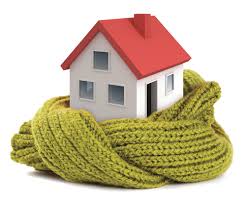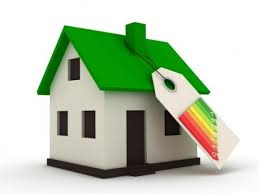Heating Your Home Need Not Be As Expensive As Last Year
 Of course, you're quite correct. We wish to shove a variety of heating control systems under your nose so you buy and install them to save energy and therefore money. While we'd love you to splash out on the awesome Honeywell EvoHome Wireless Control System it's not always necessary in the early fight against soaring energy bills.
Of course, you're quite correct. We wish to shove a variety of heating control systems under your nose so you buy and install them to save energy and therefore money. While we'd love you to splash out on the awesome Honeywell EvoHome Wireless Control System it's not always necessary in the early fight against soaring energy bills.
Think how old you are allowed to start doing real adult stuff in your lifetime, it's between 16 and 18 years old. This is the temperature range that you should keep your boiler thermostat at also. Old enough to drink, old enough to heat.
Think how cold can sometimes be, even on a summer morning, but you hardly ever turn the heating on, whereas in the Winter months we're sure you'll have the timer set to heat up the house an hour before your alarm clock goes off. Just because it's freezing outside, doesn't mean it needs to be the complete opposite inside. Keep the temperature inside moderate, consider wearing socks or under garments so as to remain comfortably warm.
Next, seek out holes in the walls - and we're not talking windows. Areas around pipework and gaps between fitted doors. Places where you place draught excluder snakes or quickly find some filler for that gap in the wall.
It's Curtains For Heat-Loss
For windows you can use heavy curtains, though not to drape over the radiator themselves, instead to fall just behind or on top. Curtains can also be used over doors or you could utilise a bed canopy with thick curtains to surround your bed at night, further keeping your body heat within. Which leads us to your rads.
Radiators heat both sides, the room and the wall. If you hang the curtain behind your radiator more heat will circulate. There is also a relatively new invention termed the radiator reflector. This can be pinned on the wall behind the rad so as to deflect up to 40% of the heat generated by the wall facing side, back into the room.
If windows are too cold and there's a draught and you can't quite afford double glazing, consider a DIY solution. Fit a pane of glass inbetween the window and the edge of the frame to further enclose any invading air from outside. A pane which can be removed or slid to open.
Keep Heating Costs Down
Other ways to keep heating costs down are, don't heat rooms you don't use and keep temperatures lower in hallways and lobbies. Ensure the doors are kept closed in these rooms and you use a draught excluder.
If you are lucky to have a garage attached to your house, consider insulating that also so that the room closest can benefit from less heat escaping. A fan of pipes? Today it is fashionable to hide pipes but leaving them open to the room ensures the heat escapes and becomes a source of central heating.
Have you ever been in a room with just hot water pipes and no radiator and wonder how warm it is? Although it is best to have pipes insulated inbetween walls. Bare pipes are perfect for heating a room, no matter how big.
Lastly, with the money you save annually on heating bills by taking the above steps - at least 10% with every temperature grade drop on the boiler thermostat you can afford to invest in those fancy wireless radiator controls and room thermostats to further reduce your energy bills. The potential benefits are huge and a new Honeywell evohome system complete with radiator controllers can save a whopping £400 per year !
How to make your home more energy efficient

There are lots of ways to make your home more energy efficient. An increasing number of people are concerned about their environmental impact and the price of energy bills. So, if you are looking to save money and reduce your carbon footprint, here are some practical, simple steps you can take today.
In the kitchen
Even small things can make a huge difference to home energy consumption over time.
- Kettle – Only boil the amount of water that you need.
- Cooking – Use the right sized pan for the job.
- Tumble dryer – Only use your tumble dyer when you can’t dry your clothes by other means.
- Washing machine – Set your washing machine to 30°C and only wash when you have a full load.
Turn it off!
Make sure everyone turns off the light when they leave the room! Turn off chargers and appliances when not in use. This includes anything left on standby. Practically all electrical appliances can be safely switched off at the plug when not in use.
Draught-proof your home
Draughts can suck pounds from your home. Sealing the gaps between floorboards, fitting heavier curtains and using draught excluders can make your heating go much further! Poorly fitted doors and windows can also be a problem. So, replacing these can make a huge impact on your energy consumption.
Let there be light!
Most people have now replaced the old fashioned incandescent light bulbs. If you haven’t made the switch yet, changing your bulbs to energy efficient ones can save you money and help the environment. Compact fluorescent light bulbs are inexpensive and use less energy, but LED lighting is even more efficient. Although the initial outlay is slightly more for LED bulbs, they have a much longer lifespan and use less electricity than compact fluorescent bulbs. You’ll see a return on this small investment within two years!
Increase energy efficiency in your home by maximising by using heating controls efficiently
If your boiler and heating controls are out-of-date, you could be wasting energy and that means money! We all know that a new boiler can be a big expense, but it could also prove to be a worthwhile investment, saving you money in the long run.
If you’re not quite ready to replace your old boiler , you can still save money and reduce your carbon emissions by getting new heating controls. The Energy Saving Trust estimates that you can save a respectable amount of money by doing the following:
- Install a room thermostat, if you don’t already have one
- If you do have a thermostat, turn it down by 1°C
- Get a hot water tank fitted
- Fit a hot water tank insulation jacket
If your heating controls are over 12 years old, they might not be functioning as well as they used to. Heating controls consist of the following:
- Room thermostat – this measures the temperature of the room and adjusts the boiler accordingly. They are at their most efficient when they are allowed a free flow of air. You can get wireless thermostats that you can carry from room to room. You can also have multiple thermostats for different rooms, which means that you can create temperature zones where you need the most heating.
- Timer – this allows you to select set times for your heating to come on and go off again. You can save money if you set your heating to only come on when you need it.
- Programmer – this can give you control over different temperatures on various days of the week. For example, you might want the heating to come on at a different time at the weekend.
- Thermostatic radiator valves (TVRs) – These let you change the temperature on your radiators , or even turn them off completely. You can adjust the temperature in each room.
So, these are some starting points for creating a more energy efficient home. You can start off with small changes and even progress to installing your own renewable technologies such as solar panels and biomass boilers. We all want to reduce our bills and help the environment and you can start the ball rolling today.










